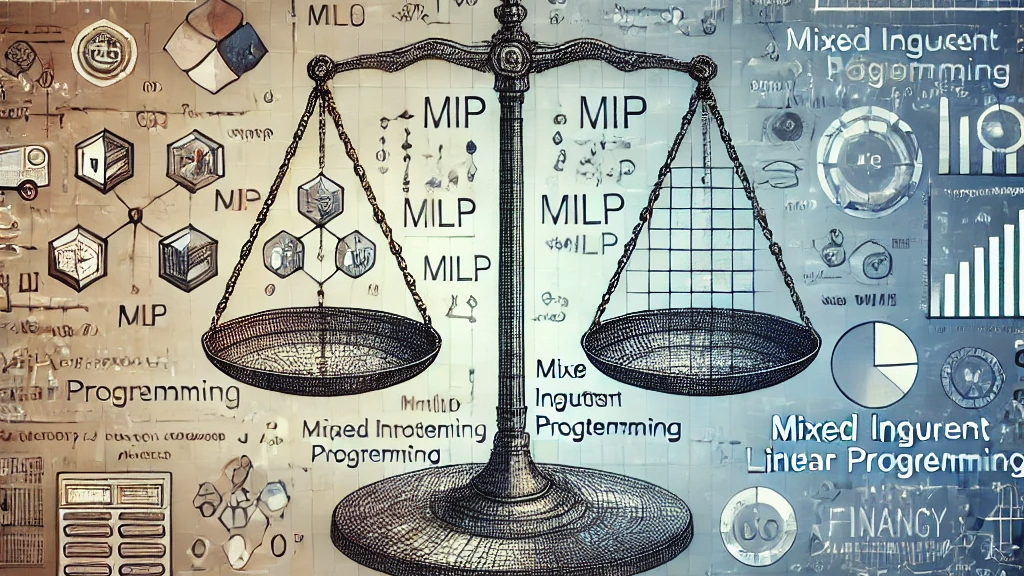
The Importance of Mixed Integer Programming (MIP) and Mixed Integer Linear Programming (MILP) in Modern Data Science and Operations Research
Kumar Vaibhav
Data Scientist @ Baker Hughes | M. Tech in AI | Computer Vision | Data Analysis | IIIT Pune
In today's data-driven world, decision-making is more complex than ever. Organizations across various industries face the challenge of optimizing resources, costs, and operations while meeting multiple constraints. This is where optimization techniques like Mixed Integer Programming (MIP) and its subset, Mixed Integer Linear Programming (MILP), play a crucial role.
Intro about MIP and MILP:
Mixed Integer Programming (MIP) involves mathematical models that include both integer and continuous variables. It is used for optimization problems where some decisions are discrete (like yes/no choices) and others are continuous (like resource allocation).
Mixed Integer Linear Programming (MILP) is a specific type of MIP where the relationships between variables are linear. This means the objective function and constraints are linear equations or inequalities.
Importance of MILP and MIP:
1. Real-World Applicability:
- MIP and MILP models can represent a wide range of real-world problems where decisions are both quantitative and qualitative. For example, in supply chain management, decisions might involve selecting suppliers (discrete choice) and determining order quantities (continuous choice).
2. Optimization in Complex Scenarios:
- MIP and MILP enable organizations to optimize complex systems with numerous variables and constraints. This leads to better resource utilization, cost savings, and more efficient operations. For instance, optimizing a production schedule in manufacturing involves ensuring that machines and workers are efficiently allocated, while also meeting production targets.
3. Strategic Decision-Making:
- These techniques support strategic decisions by providing a framework for evaluating multiple scenarios and their potential outcomes. This helps organizations make informed choices that align with long-term goals. For example, capital budgeting decisions often involve choosing which projects to invest in while staying within a budget and maximizing return on investment.
领英推荐
4. Flexibility and Adaptability:
- MIP and MILP are highly flexible, allowing for the incorporation of various constraints and objectives specific to an organization’s needs. Whether it's minimizing costs, maximizing profits, or balancing trade-offs between different goals, these models can be tailored to achieve the desired outcome.
5. Handling Uncertainty:
- In many real-world situations, data is incomplete or uncertain. MIP and MILP models can include uncertainty in the form of constraints or objective functions, allowing for robust decision-making even in the face of incomplete information.
Applications Across Industries:
- Supply Chain Management: Optimize logistics, inventory management, and supplier selection to minimize costs and meet customer demand.
- Manufacturing: Improve production schedules, minimize downtime, and ensure efficient use of resources.
- Finance: Optimize investment portfolios, manage risk, and make strategic investment decisions.
- Energy: Plan and optimize energy production and distribution, taking into account fluctuating demand and supply constraints.
Observations:
MIP and MILP are indispensable tools in the toolkit of data scientists, operations researchers, and decision-makers. Their ability to handle complex, multi-variable optimization problems makes them essential for any organization looking to enhance efficiency, reduce costs, and make informed, strategic decisions. As the complexity of business environments continues to grow, the importance of these techniques will only increase, making them critical for future success.
Co-Founder of Altrosyn and DIrector at CDTECH | Inventor | Manufacturer
7 个月It's fascinating how MIP and MILP are finding applications in fields like autonomous vehicle routing, mirroring the historical use of linear programming in early space exploration missions. The ability to model complex constraints and objectives within these frameworks is truly remarkable. Given the increasing complexity of real-world problems, how do you envision the future development of solution algorithms for MIP and MILP, particularly in addressing non-convexity and scalability challenges?